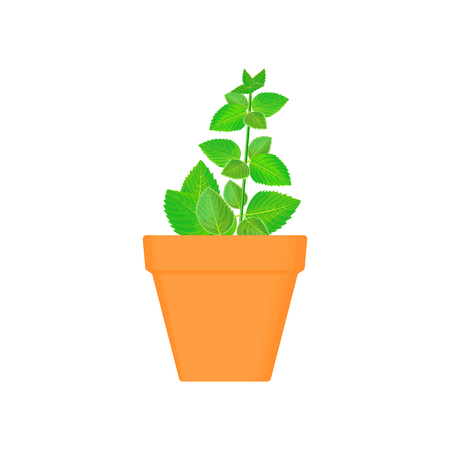Introduction to Native Plants and Soil Health
Native plants are species that have evolved naturally in a specific region, adapting over thousands of years to the local climate, soil, and wildlife. In the United States, native plants vary from state to state—from wildflowers like Black-eyed Susans in the Midwest to California poppies on the West Coast. Home gardeners across the country are discovering that growing native plants not only supports pollinators and wildlife but also plays a big role in creating better, healthier soil.
What Makes a Plant “Native”?
A native plant is one that existed in an area before European settlement. These plants are well-suited to local conditions and require less water, fertilizer, and pesticides compared to non-native or exotic species. They create a natural balance in your garden by working hand-in-hand with local insects, birds, and microorganisms.
Why Healthy Soil Matters for Home Gardens
Soil health is the foundation of every thriving garden. Good soil holds nutrients and moisture, supports root growth, and helps fight off pests and diseases. When your garden’s soil is healthy, your plants grow stronger and need less help from fertilizers or chemicals. Improving soil health also leads to better water drainage and helps prevent erosion.
Benefits of Healthy Soil for Home Gardens
| Benefit | Description |
|---|---|
| Better Plant Growth | Healthy soil provides essential nutrients for roots to grow deep and strong. |
| Water Retention | Good soil structure holds onto water longer, reducing the need for frequent watering. |
| Pest & Disease Resistance | Diverse soil life helps protect plants from harmful pests and diseases naturally. |
| Sustainable Gardening | Less need for chemical fertilizers means a safer yard for families, pets, and wildlife. |
The Link Between Native Plants and Soil Health
Native plants work with the soil instead of against it. Their roots help build rich organic matter, improve soil structure, and support beneficial microbes. Over time, planting natives can turn tired or poor soils into a vibrant home for all kinds of garden life. By choosing plants that belong in your region, you’re setting up your home garden for long-term success—right from the ground up.
2. Root Systems: Improving Soil Structure and Preventing Erosion
Native plants have root systems that are specially adapted to local environments across the United States. These roots do much more than simply anchor the plant—they play a key role in creating healthier soil in your home garden. Let’s look at how these unique root structures work to break up compacted soil, improve aeration, and stop erosion right in your backyard.
How Native Plant Roots Transform Soil
Many native plants have deep, strong roots compared to the shallow roots of common non-native garden plants. These deep roots reach down into the earth, making it easier for water and nutrients to move through the soil. This process helps loosen up hard, compacted ground that can sometimes make gardening difficult.
| Root Feature | Native Plants | Non-Native Plants |
|---|---|---|
| Depth | Very deep (sometimes several feet) | Usually shallow (few inches to a foot) |
| Structure | Diverse (fibrous, taproots) | Mainly fibrous or surface-level |
| Aeration Effect | Excellent—creates channels for air and water | Limited—less impact on soil structure |
| Erosion Control | Strong—roots hold soil in place during rain or wind | Poor—soil washes away easily |
The Benefits of Better Soil Structure and Aeration
When native plant roots grow, they naturally make tiny tunnels in the soil. These tunnels allow air and water to flow more freely, which is important for healthy plant growth. With improved aeration, good microbes and earthworms thrive, further boosting soil health.
Preventing Erosion with Native Roots
Erosion is a big problem in many gardens, especially after heavy rain or strong winds. The deep and spreading root systems of native plants act like a net, holding onto the soil and preventing it from washing or blowing away. This means your garden stays healthier and you lose less valuable topsoil over time.
Quick Tips:
- Add a mix of native grasses and wildflowers to slopes or bare spots in your yard for better erosion control.
- If you notice compacted soil, choose natives with deep taproots like Purple Coneflower or Black-Eyed Susan.
- Use mulch around native plantings to help keep moisture in and reduce surface runoff.

3. Organic Matter and Soil Fertility
Native plants play a big role in improving soil health by adding organic matter and boosting fertility in home gardens. When native species shed their leaves, flowers, and stems, this natural plant debris—often called leaf litter—breaks down slowly on the ground. This process enriches the soil with valuable nutrients and creates an ideal environment for beneficial organisms.
How Native Plant Debris Benefits Your Garden Soil
Leaf litter from native plants is more than just garden “trash.” As it decomposes, it:
- Adds Organic Matter: Broken-down leaves and stems increase the organic content of your soil, making it richer and healthier.
- Improves Soil Structure: Organic matter helps soil particles stick together just enough to create spaces for air and water, supporting root growth.
- Feeds Soil Life: Earthworms, fungi, and microbes feast on this natural debris, breaking it down further and cycling nutrients back into the soil.
- Retains Moisture: Organic-rich soils hold water better, so you spend less time watering.
Comparing Native vs. Non-Native Plant Debris
| Feature | Native Plants | Non-Native Plants |
|---|---|---|
| Decomposition Rate | Balanced—feeds soil organisms steadily | Can be too fast or too slow for local ecosystems |
| Nutrient Content | Matches local soil needs naturally | May lack key nutrients or introduce excesses |
| Support for Local Wildlife | High—native insects and microbes thrive | Low—less familiar to local soil life |
| Disease Risk | Low—plants adapted to local conditions | Sometimes higher due to unfamiliar pathogens |
Tips for Using Native Plant Debris in Your Home Garden
- Leave the Leaves: Instead of bagging up fallen leaves, let them break down naturally on your garden beds.
- Avoid Over-Cleaning: Don’t remove all plant debris at the end of the season; a light layer helps feed your soil over winter.
- Create Mulch: Shred larger stems or branches from native plants to use as mulch around your garden.
- Diversify Your Plantings: Grow a mix of native species to ensure year-round organic matter input and a healthier soil ecosystem.
Nurturing your garden with native plant debris is one of the simplest ways to build better soil that supports strong, resilient plants—and a thriving local ecosystem right outside your door.
4. Promoting Beneficial Soil Microbes and Wildlife
Native plants do more than just look beautiful in your garden—they also play a big role in creating healthy soil. One of the most important ways they help is by supporting the tiny organisms that live below the surface, like soil microbes, earthworms, and helpful insects. These living things are essential for building rich, healthy soil that helps all your plants thrive.
The Power of Native Plants in Soil Ecosystems
When you plant native species, their roots interact with local soil microbes in ways non-native plants often cant. This relationship creates a balanced underground community that breaks down organic matter, cycles nutrients, and keeps soil structure loose and healthy. The result? Your garden gets healthier over time without needing as many fertilizers or chemical treatments.
Key Players in Healthy Soil
| Soil Helper | What They Do | How Native Plants Help |
|---|---|---|
| Soil Microbes (Bacteria & Fungi) | Break down organic matter, release nutrients for plants | Native plant roots provide the right sugars and chemicals to feed local microbes |
| Earthworms | Aerate soil, break down leaves, create nutrient-rich castings | Leaf litter from native plants offers perfect food and cover for worms |
| Beneficial Insects (like beetles) | Decompose dead material, control pests, pollinate flowers | Diverse native plantings attract and shelter these insects year-round |
The Native Plant Advantage
Because native plants evolved alongside local wildlife, they’re uniquely equipped to support these crucial soil dwellers. Their leaf litter decomposes at the right pace to feed microbes and worms throughout the seasons. Their root systems create tunnels and pockets where beneficial bugs can hide and reproduce. Even better, when you choose a mix of different native plants, you make it even easier for good bugs and microbes to find what they need to thrive.
If youre looking to build healthy soil for your home garden that lasts season after season, adding more native plants is one of the easiest and most effective steps you can take. Youll see better plant growth above ground—and know theres a world of helpful creatures working hard below the surface too.
5. Practical Tips for Incorporating Native Plants into Home Gardens
Why Choose Native Plants?
Native plants are naturally adapted to the local climate and soil conditions in your region. This means they need less water, fertilizer, and maintenance compared to non-native species. By planting natives, you help build healthier soil, attract beneficial insects, and support wildlife in your neighborhood.
Getting Started: Selecting the Right Native Plants
It’s important to choose plants that are native to your specific area. Local extension offices or native plant societies can provide lists of suitable species. You can also check with nurseries that specialize in native plants.
| Region | Sample Native Plants |
|---|---|
| Northeast | Black-eyed Susan, Wild Bergamot, Eastern Bluestar |
| Southeast | Coreopsis, Purple Coneflower, Little Bluestem |
| Midwest | Prairie Dropseed, Butterfly Milkweed, Purple Prairie Clover |
| West Coast | California Poppy, Blue-eyed Grass, Yarrow |
| Southwest | Pineleaf Penstemon, Desert Marigold, Four-wing Saltbush |
Steps for Integrating Native Plants into Your Garden
- Observe Your Yard: Take note of sunlight patterns, moisture levels, and existing soil conditions.
- Select a Variety: Mix grasses, wildflowers, shrubs, and groundcovers for year-round interest and soil benefits.
- Prepare the Soil: Remove invasive weeds and loosen compacted areas. Natives often thrive in less amended soils but removing competition is key.
- Plant at the Right Time: Most natives do best when planted in fall or early spring.
- Water Wisely: Water regularly until established; after that, most natives need little supplemental water.
- Add Mulch: Use natural mulch like wood chips or leaf litter to retain moisture and slowly improve soil as it breaks down.
- Avoid Chemicals: Skip synthetic fertilizers and pesticides. Natives often thrive with organic approaches and minimal inputs.
Troubleshooting Common Challenges
- If growth seems slow at first, remember native plants typically focus on building strong roots before rapid top growth appears.
- If weeds persist, add extra mulch around new plantings and hand-pull unwanted species regularly while natives get established.
- If you’re unsure what’s native or how to maintain it, reach out to local gardening clubs or Cooperative Extension offices for advice.
Your Backyard Can Make a Difference!
Incorporating native plants into your home garden isn’t just good for your yard—it benefits your entire local ecosystem by improving soil health and supporting pollinators. With a little planning and care, you can create a beautiful landscape that’s easy to maintain and great for the environment.


